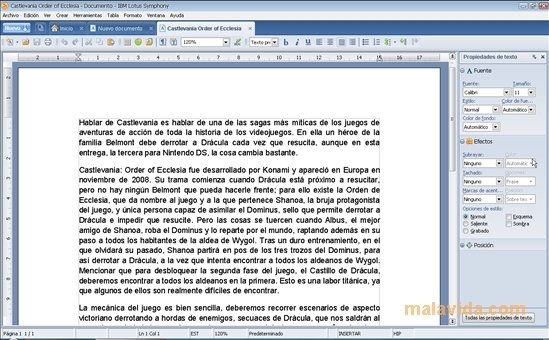
It may be more simple than iWorks, but it is for the better coz it is more easy to use than iWork. It use a right hand panel which works a bit like iWorks right hand panel. It may not be as flashy as iWork, but it is certainly a refreshing change from Microsoft Office. Starting “Lotus Symphony Documents” reveals the main UI. I would had prefer the installation process ask me whether I want this done rather than assuming I want it. The second disappointing thing is the automatic installation of three shortcut buttons for the three applications on my desktop. This is dissappointing because it is an old practice whcih Microsoft abandoned with Office 2003 and above (thank god).

Then come the first disappointment: When you click Start->All Programs from Windows, you find that it actually installed three icons, one each to “Documents”/”Presentation”/”Spreadsheet” instead of putting them into a folder named “Lotus Symphony”. The only surprise is the prompt to “restart” Window, especially if you are used to Eclipse.
#LOTUS SYMPHONY SPREADSHEETS INSTALL#
Comparatively it takes much less time to install than Microsoft Office and. It is also less confusing than ’s installation. Like any Windows-based software, it is easy.
#LOTUS SYMPHONY SPREADSHEETS ZIP#
The download is a self-extracting zip file, which you have to unzip then click setup.exe. Second, the screenshots look good and I want to compare it with Microsoft Office, and iWork.įirst thing is to install it. Not wanting to spend a penny on Lotus Workspace, peeking inside Lotus Symphony will simply have to do 😉. Firstly, as a programmer, I am naturally curious on how IBM used Eclipse in Lotus Workspace. I downloaded the Windows version and took it for a spin.

As you all know, IBM just released Lotus Symphony, a free Office Application for Windows and Linux (with Mac to follow).


 0 kommentar(er)
0 kommentar(er)
